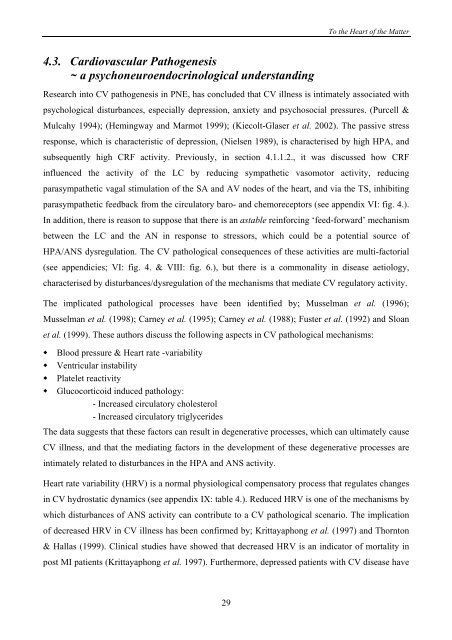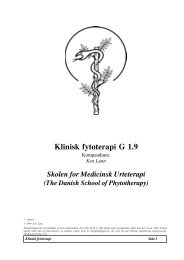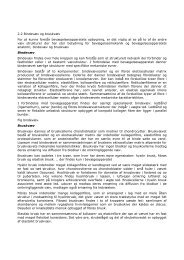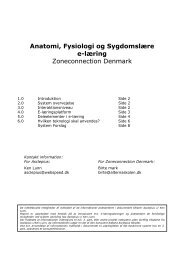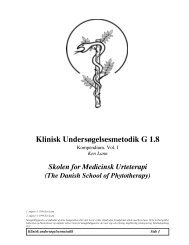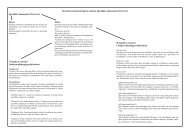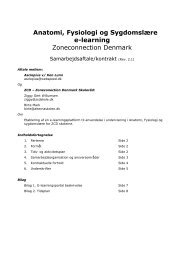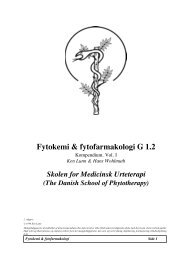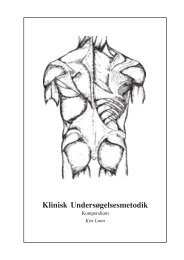PDF File - Asclepius Herbal Consultancy
PDF File - Asclepius Herbal Consultancy
PDF File - Asclepius Herbal Consultancy
Create successful ePaper yourself
Turn your PDF publications into a flip-book with our unique Google optimized e-Paper software.
4.3. Cardiovascular Pathogenesis<br />
~ a psychoneuroendocrinological understanding<br />
To the Heart of the Matter<br />
Research into CV pathogenesis in PNE, has concluded that CV illness is intimately associated with<br />
psychological disturbances, especially depression, anxiety and psychosocial pressures. (Purcell &<br />
Mulcahy 1994); (Hemingway and Marmot 1999); (Kiecolt-Glaser et al. 2002). The passive stress<br />
response, which is characteristic of depression, (Nielsen 1989), is characterised by high HPA, and<br />
subsequently high CRF activity. Previously, in section 4.1.1.2., it was discussed how CRF<br />
influenced the activity of the LC by reducing sympathetic vasomotor activity, reducing<br />
parasympathetic vagal stimulation of the SA and AV nodes of the heart, and via the TS, inhibiting<br />
parasympathetic feedback from the circulatory baro- and chemoreceptors (see appendix VI: fig. 4.).<br />
In addition, there is reason to suppose that there is an astable reinforcing ‘feed-forward’ mechanism<br />
between the LC and the AN in response to stressors, which could be a potential source of<br />
HPA/ANS dysregulation. The CV pathological consequences of these activities are multi-factorial<br />
(see appendicies; VI: fig. 4. & VIII: fig. 6.), but there is a commonality in disease aetiology,<br />
characterised by disturbances/dysregulation of the mechanisms that mediate CV regulatory activity.<br />
The implicated pathological processes have been identified by; Musselman et al. (1996);<br />
Musselman et al. (1998); Carney et al. (1995); Carney et al. (1988); Fuster et al. (1992) and Sloan<br />
et al. (1999). These authors discuss the following aspects in CV pathological mechanisms:<br />
Blood pressure & Heart rate -variability<br />
Ventricular instability<br />
Platelet reactivity<br />
Glucocorticoid induced pathology:<br />
- Increased circulatory cholesterol<br />
- Increased circulatory triglycerides<br />
The data suggests that these factors can result in degenerative processes, which can ultimately cause<br />
CV illness, and that the mediating factors in the development of these degenerative processes are<br />
intimately related to disturbances in the HPA and ANS activity.<br />
Heart rate variability (HRV) is a normal physiological compensatory process that regulates changes<br />
in CV hydrostatic dynamics (see appendix IX: table 4.). Reduced HRV is one of the mechanisms by<br />
which disturbances of ANS activity can contribute to a CV pathological scenario. The implication<br />
of decreased HRV in CV illness has been confirmed by; Krittayaphong et al. (1997) and Thornton<br />
& Hallas (1999). Clinical studies have showed that decreased HRV is an indicator of mortality in<br />
post MI patients (Krittayaphong et al. 1997). Furthermore, depressed patients with CV disease have<br />
29


